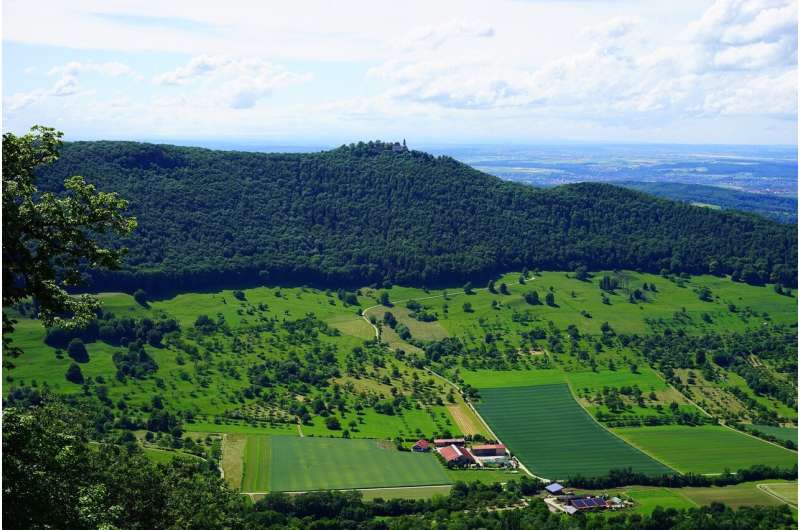This article has been reviewed according to Science X's editorial process and policies. Editors have highlighted the following attributes while ensuring the content's credibility:
fact-checked
peer-reviewed publication
trusted source
proofread
Human land use as influential as climate in driving plant species distribution, study shows

Human land use is now comparable to climate in driving global patterns of plant occurrence, with new research showing that species are not affected equally; slow-growing plants like trees are less able to cope with more intensive human land use than disturbance-tolerant species like grasses.
A new study has shed light on the significant and growing impact of human land use on global plant distribution, revealing that human activity can now be as influential as climate in determining which types of plants can live where. The findings are published in the journal Global Ecology and Biogeography.
Researchers in Trinity's School of Natural Sciences demonstrated that human activity acts as a filter, shaping the occurrence of plant species alongside climate factors. Slow-growing plants, such as trees, are particularly vulnerable to the effects of human land use, while disturbance-tolerant species like grasses can benefit.
The study, carried out at an unprecedented global scale, analyzed data from over 4,800 species across six continents and 41 countries. The study found plant occurrence can change as much between different land uses as between different climates.
Temperature variation in a given area, a key dimension of climate change, has the biggest impact on which species occur where, while human land use is as important as temperature, rainfall and rainfall variation in a given area in driving plant distributions.
Climate change and its impact on species rightly receives huge research interest and investment, and there is a wealth of evidence for the impacts climate change has on biodiversity. However, the leading cause of biodiversity loss and ecosystem change is currently human land use. 75% of the earth's surface is subject to anthropogenic land use. Further, the rate of land use change is accelerating most rapidly in areas with highest biodiversity.
"We have really good evidence for how climate, and climate change, impacts biodiversity. This study provides broad scale evidence for the importance of human land use on a global scale," said Dr. Caroline McKeon, who conducted the research at Trinity, and which was published in the journal Global Ecology and Biogeography.
"We have shown that the effects of climate on which types of plants occur is comparable to the effects of different land uses, and that certain species are better able to cope with the disturbance caused by human land use than others.
"Humans are in direct competition with plant species for highly productive environments, and we find that species that have historically dominated these climates are the least able to cope with human disturbance. Human land use is acting as a filter, contracting the area that is most suitable to slow-growing species while allowing disturbance-tolerant plants to expand their range."
The findings also reveal significant differences in how species respond to human land use, with certain species struggling more than others.
"Species have evolved different strategies for surviving, growing and reproducing in different climates," added Dr. McKeon. "What human activity is doing is making it much more difficult for certain, slow-growing, species to survive."
"Take Ireland as an example—climate conditions are favorable for over 80% of the surface to be covered in forest. However, what we actually have is less than 10% native forest and more than 50% grassland. So we have climate determining which plant species can occur, but human activities determine which species ultimately do occur.
"Because human influence is so pervasive, this really changes how suitable species' strategies are for the world they are trying to live in. A key thing to consider is that human land use is incredibly prevalent on the surface of the earth. And with the exception of the colder, dryer places like boreal taiga and tundra, we like to live and farm in the same places that are suitable for a lot of plants. So certain types of species are really under pressure."
This research significantly contributes to the emerging understanding of which species thrive and struggle in a world influenced by both climate and human land use. By highlighting the comparable influence of human land use and climate on global plant occurrence, the study emphasizes the need to consider land use as a key driver of biodiversity.
More information: Caroline M. McKeon et al, Human land use is comparable to climate as a driver of global plant occurrence and abundance across life forms, Global Ecology and Biogeography (2023). DOI: 10.1111/geb.13713
Journal information: Global Ecology and Biogeography
Provided by Trinity College Dublin

















